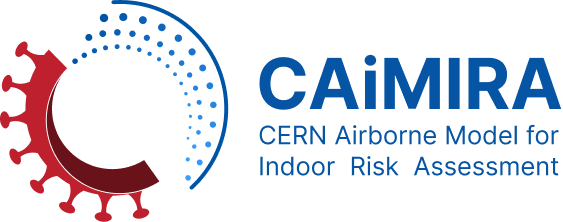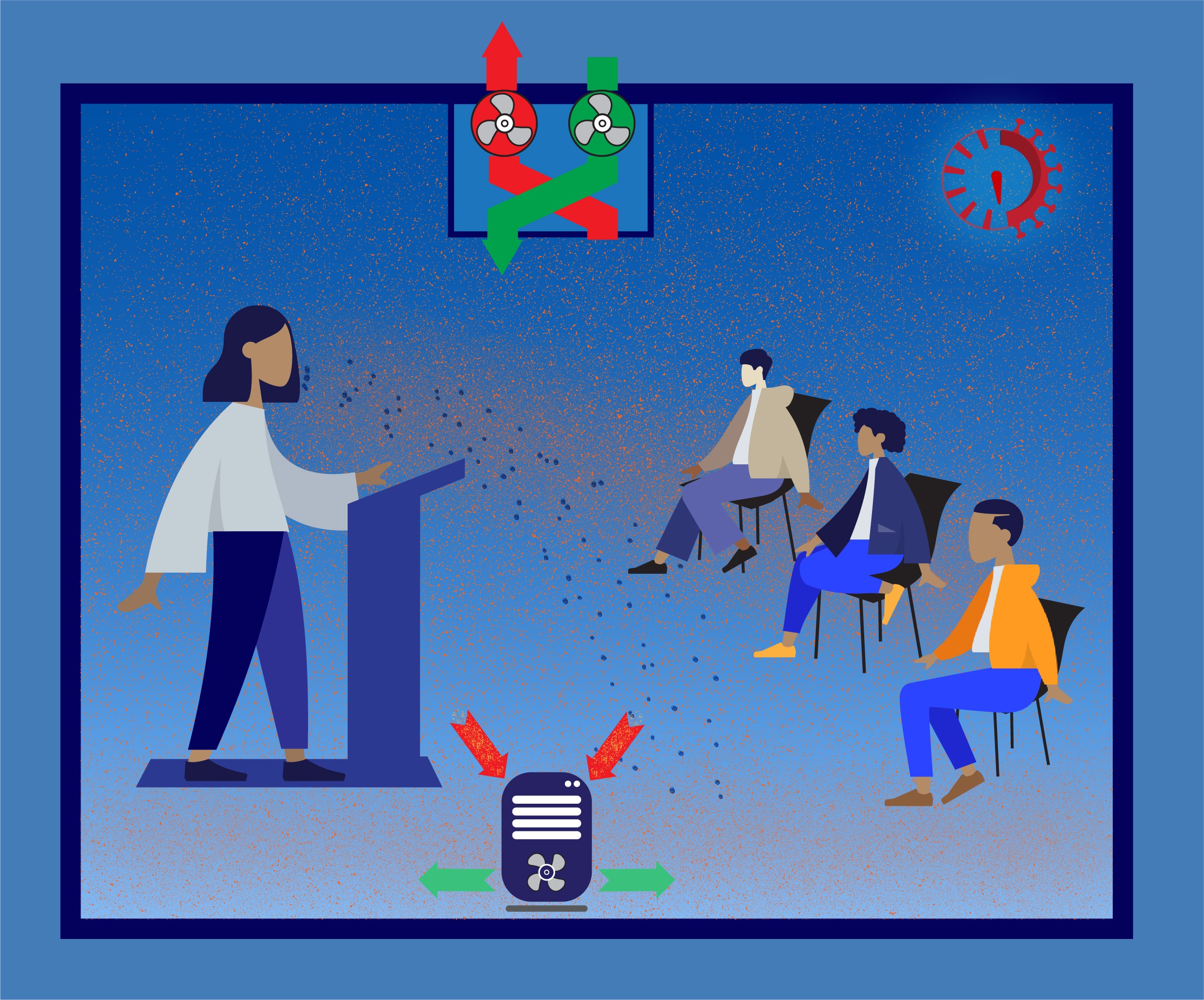

Introduction
CAiMIRA is a risk assessment tool developed to model the concentration of viruses in enclosed spaces, in order to inform space-management decisions. It does this by simulating the airborne spread SARS-CoV-2 virus in a finite volume, assuming homogenous mixing for the long-range component and a two-stage jet model for short-range, and estimates the risk of COVID-19 airborne transmission therein. Please see the About page for more details on the methodology, assumptions and limitations of CAiMIRA.
The full CAiMIRA source code can be accessed freely under an Apache 2.0 open source license from our code repository. It includes detailed instructions on how to run your own version of this tool.

CAiMIRA @ CERN
CAiMIRA has been developed by CERN with the intention of allowing members of personnel with roles related to supervision, health & safety or space management to simulate the concerned workplaces on CERN sites. A hosted CERN version of the CAiMIRA Calculator is available on this site to members of the CERN personnel.
Reference & Citation
For use of the CAiMIRA model:
- Henriques A, Mounet N, Aleixo L, Elson P, Devine J, Azzopardi G, Andreini M, Rognlien M, Tarocco N, Tang J. (2022). Modelling airborne transmission of SARS-CoV-2 using CARA: risk assessment for enclosed spaces. Interface Focus 12: 20210076. doi.org/10.1098/rsfs.2021.0076 Download citation
- Jia W, Wei J, Cheng P, Wang Q, Li Y. (2022). Exposure and respiratory infection risk via the short-range airborne route. Building and Environment 219: 109166. doi.org/10.1016/j.buildenv.2022.109166
Short-range expiratory jet model from:
- CAiMIRA – CERN Airborne Model for Indoor Risk Assessment tool
© Copyright 2020 CERN. All rights not expressly granted are reserved.
Licensed under the Apache License, Version 2.0
LICENSE
Acknowledgements
Click to expand
We wish to thank CERN at the different Departments working on the project: Occupational Health & Safety and Environmental Protection Unit, Information Technology Department, Beams Department, Experimental Physics Department, Industry, Procurement and Knowledge Transfer Department and International Relations Sector for their support to the study. We also wish to thank our collaborators at the World Health Organization (WHO) for thier endless support to this project, in particular to the members of the ARIA Expert Group.